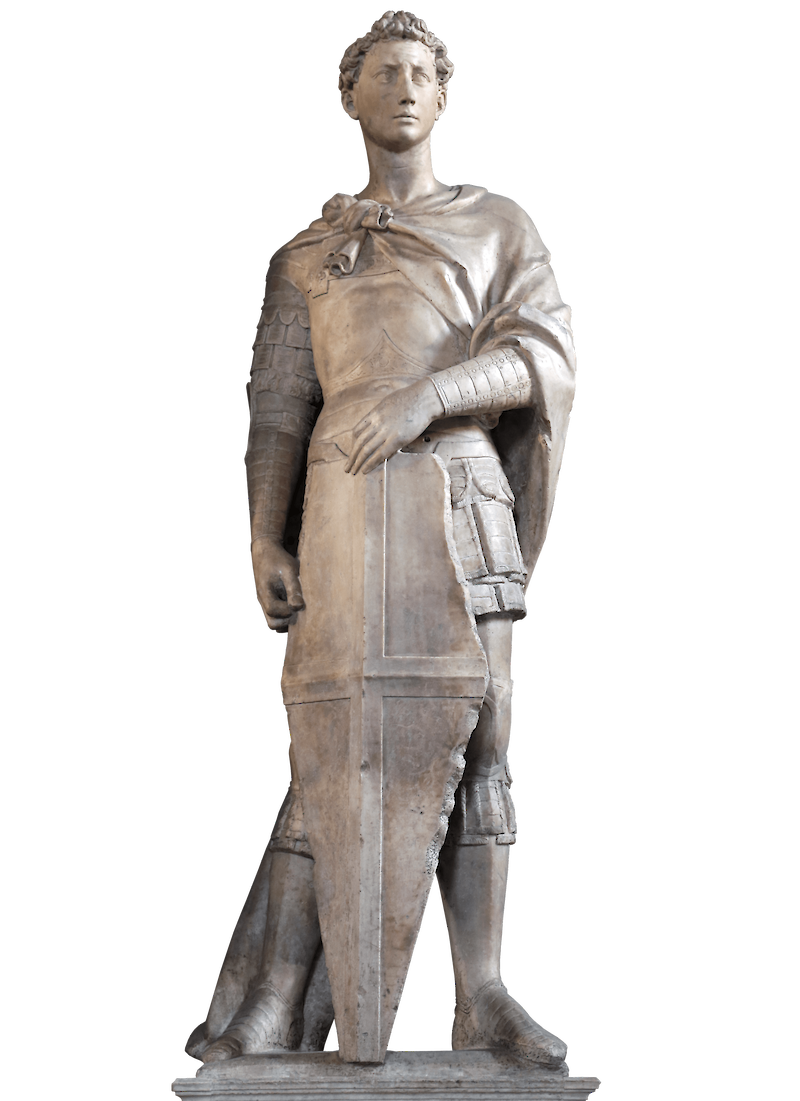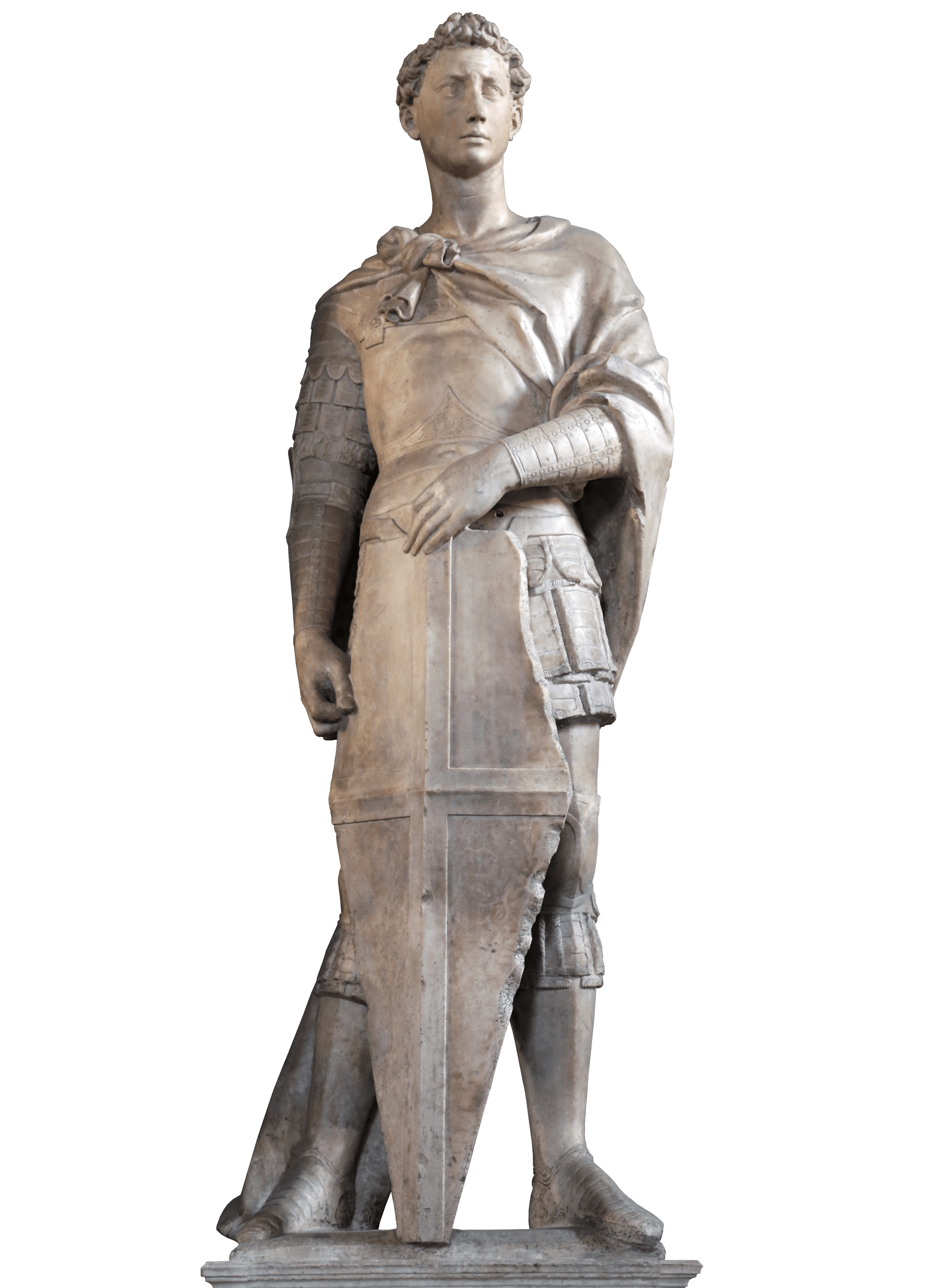


Florence in the 15th century was a good place to be an artist. Backed by both the church and government, powerful trade guilds competed to finance grand buildings and public art to show off their influence. For nearly 3 decades, a building called the Orsanmichele was the arena where corporate-funded artists competed for commissions and fame.
The Orsanmichele was a granary-turned-church, dedicated to and used by Florence’s trade guilds. In 1499, the city mandated that the guilds commission statues of their patron saints to fill the 14 niches in the church’s facade. Recognizing an opportunity for public one-upmanship, the guilds brought in the best sculptors in Florence and beyond, including Verrocchio, Brunelleschi, Lorenzo Ghiberti, and Donatello. At this time Donatello was roughly mid-career—a respected sculptor but still in the shadow of the Florentine titan Ghiberti. The senior artist won the commissions for expensive bronze sculptures from the wealthiest guilds: foreign cloth merchants, wool merchants and bankers, while Donatello was left with cheaper marble commissions from so-called middle and minor guilds. It was one such minor guild, the Arte dei Corazzai e Spadai, or Guild of Armorers and Swordsmiths, who commissioned Saint George.
Saint George was a popular figure in the Middle Ages. A Roman soldier who was martyred rather than recant his christian faith, it was the time he slayed a dragon to save a princess that made George a Renaissance superstar, painted and sculpted again and again through history.
And Donatello really does the young knight justice. The architectural niches that studded church exteriors were narrow, so St. George didn't have room for a dramatic stance. Donatello positioned him standing in classical contrapposto, his face is stoic, brow furrowed, and gaze directed to the horizon. He’s young, strong, and beautiful. Even better, he’s wearing armor. Because saint-though-he-may-be, George was also an advertisement for the guild who venerated him, and Donatello knew how to please a client. A sturdy shield stands in front of the saint, his tunic is tossed over his shoulder revealing plated leather armor, a drill-hole in the forehead suggests the saint originally wore a helmet, and the hand at his waist looks designed to hold a sword.
...
Every six-hundred year old statue has had its hard knocks, but the intervening centuries were rough on Saint George. In 1858 some jackass threw a stone that broke off George’s nose. Later, in 1892 he was removed from his niche, replaced by a replica in flashy bronze, and finally he was stolen from the Villa Medici, only to be recovered in 1945 by the historian Frederick Hart. Today, you can commune with brave, long-suffering Saint George at the Bargello Museum in Florence.
...
Got questions, comments or corrections about Saint George? Join the conversation in our Discord, and if you enjoy content like this, consider becoming a member for exclusive essays, downloadables, and discounts in the Obelisk Store.

